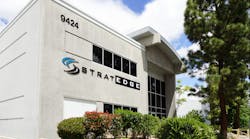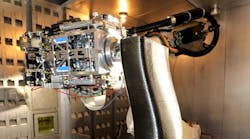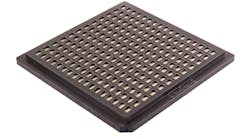Noise can start from inside or outside an RF/microwave circuit or system, but it’s controllable when adding filters and shields that target electromagnetic interference (EMI) and radio-frequency interference (RFI). Both types of components provide reasonable noise suppression and, with proper planning, add little to the size and cost to a design. But why use one noise-suppressing component rather than another—what’s the difference? Some suppliers offer EMI/RFI filters as well as shielding materials and may even recommend using both at the same time. So, when does one noise blocker make more sense than the other?
EM shields are meant to prevent radiated emissions of EM fields propagating beyond a certain point, such as outside an equipment cabinet or enclosure. EM energy that propagates beyond that threshold can act as interference for other equipment (e.g., cell phones and radios), preventing their proper operation. By surrounding an EM field with a conductive barrier, such as a copper or stainless-steel gasket that seals an equipment enclosure, the EM field can be contained, and interference minimized.
When an EM wave strikes an EMI/RFI shield, two things happen. Most of the energy from the EM wave is reflected by the conductive surface of the shield, in different directions, depending on the material qualities and the phase of the WM wave at the point of impact. Some of the energy from the EM wave is also absorbed by the shield—it will be converted into heat energy that, depending on the power levels, may require additional thermal management. Some EMI/RFI shielding materials are formulated to double as shields and thermal-management materials, and can be used as both shields and heat sinks.
An EMI/RFI shield also works in both directions. It can contain EM radiation within an area described by the shielding material, but also prevents EM radiation from sources outside of the shielding protection, such as cell-phone signals and radio broadcast signals, from reaching within the area (and its circuits and components) defined by the shields. In contrast, EMI/RFI filters control EM energy traveling through conductors, such as wires and connectors, and are added to specific points along a circuit with the intention of controlling current flow at different frequencies.
Shielding materials, such as thin sheets of copper or aluminum, require good ground connections for effective EM field containment. EMI/RFI shields may also require openings in the metal sheets to release heat generated in higher-power electronic circuits, especially for shielding materials that absorb rather than reflect EM fields. The sizes of the openings should not relate to the wavelengths of the EM waves that are being contained, otherwise it will minimize the shielding effectiveness (SE) of an EMI/RFI shield.








